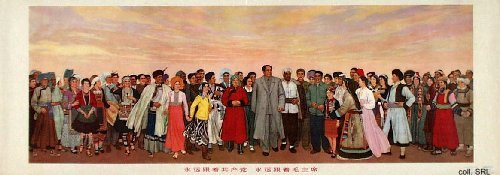2007-12-11
Great Leap Forward
Great Leap Forward,
Before long, the land that had been handed out to the peasants was slowly returned to the state. In a process of collectivization that started in 1953, the farmers were first organized in so-called mutual help teams. These were gradually merged into lower agrarian cooperatives. During the Great Leap Forward, these lower forms of cooperatives would be merged into huge People's Communes.
land reform
Despite the centrality of Land Reform in the party's policies, publication data from 1949 indicate that less than two percent of the total poster production was devoted to typical rural topics, including methods to improve production. This suggests even more strongly the extent to which posters were intended to support other types of mobilizational techniques. It may also point to important shifts that emerged in the political agenda. Shortly after the fields had been turned over to the tiller, preparations began to familiarize the peasantry with the next step in agricultural reform.
land reform
Land Reform
Long before the Land Reform Law was promulgated on 30 June 1950, the CCP had been experimenting with measures to return the land to the vast numbers of peasants. These experiments, which had taken place wherever the party had been able to maintain a stronghold, including the Jiangxi Soviet and Yan'an, had known various radical aspects, but boiled down to the abolishment of landownership by the landlord class and the introduction of peasant landownership. A new element that was introduced in 1950 was the provision that the development of agricultural production resulting from this would pave the way for the industrialization of China. As a result, many peasant households held the deed for their piece of land for the first time ever.
2007-12-09
Shanghai Style
Economic Construction Period
The poster below was designed to accompany a drive to persuade people to purchase bonds during the "Economic Construction Period" which started in December 1953. Ostensibly well-to-do urbanites and private businessmen were urged to subscribe from January to March 1954, and to hand over their ample savings to the government in order to contribute to national reconstruction. The sign on the left identifies the receiving party as the "National Economic Reconstruction Bonds Subscription Office".





















